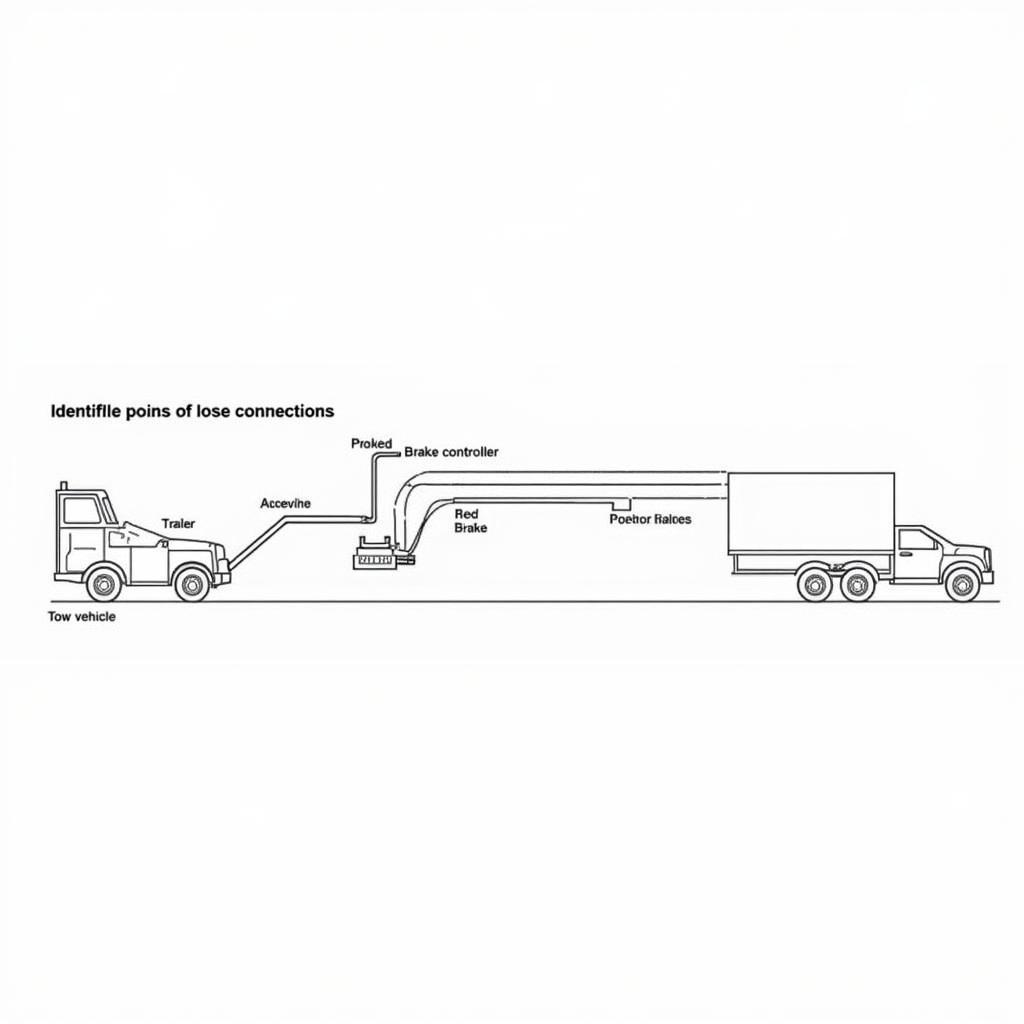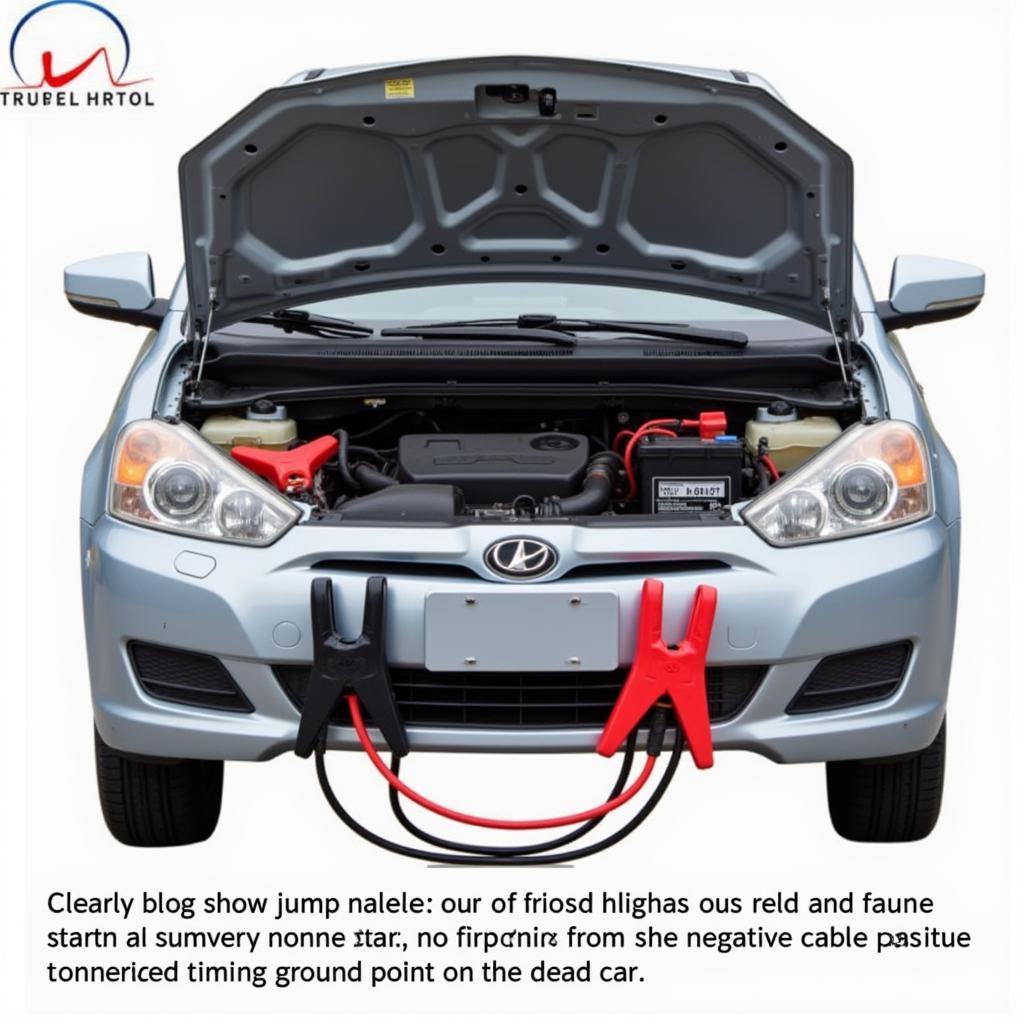The brake light warning system is a critical safety feature in your vehicle, alerting other drivers when you’re slowing down or stopping. When functioning correctly, it illuminates red lights at the back of your car when you press the brake pedal. If this system malfunctions, it can increase the risk of accidents. Understanding the components of your “brake light warning system components” is crucial for diagnosing and addressing any issues.
Key Components of the Brake Light Warning System
Several components work together to ensure your brake lights function correctly. These include:
- Brake Pedal Switch: This switch is located above the brake pedal and is activated when you press it. The switch completes an electrical circuit, sending a signal to the brake lights to illuminate.
- Brake Light Bulbs: These are the actual lights at the back of your vehicle. Most cars use incandescent bulbs, but some newer models use LEDs.
- Fuses and Relays: Fuses protect the brake light circuit from power surges. A blown fuse will interrupt the circuit and prevent the lights from working. Relays act as electrical switches, allowing a small current to control a much larger current flow to the brake lights.
- Wiring and Connectors: These carry the electrical signals between the various components.
- Brake Light Warning Light: This light, usually located on the dashboard, illuminates if there’s a problem with your brake light system.
- Electronic Control Module (ECM): In modern vehicles with more advanced brake light systems, the ECM plays a role in monitoring the system and detecting faults.
Common Causes of Brake Light Warning System Issues
Now that you understand the key components, let’s explore common reasons your brake light warning system might engage:
- Burned-Out Bulbs: One of the most common causes is simply a burned-out bulb.
- Faulty Brake Light Switch: A malfunctioning brake light switch might not send the signal to illuminate the bulbs when the brake pedal is pressed.
- Blown Fuse or Faulty Relay: A power surge or short circuit can cause a fuse to blow, interrupting the flow of electricity to the brake lights. Similarly, a faulty relay can prevent the lights from receiving power.
- Wiring Problems: Damaged, corroded, or loose wiring and connectors can disrupt the electrical signals within the system.
- Faulty ECM: While less common, a problem with the ECM can also trigger brake light issues, especially in vehicles with more sophisticated electronic systems.
Troubleshooting Brake Light Warning System Problems
If you’re experiencing issues with your brake light warning system, here’s a step-by-step guide to help you troubleshoot:
- Check the Brake Light Bulbs: The first step is to inspect the bulbs. If a bulb is burned out, replace it with a new one of the correct type and wattage.
- Inspect the Brake Light Switch: If the bulbs are fine, locate the brake light switch above the brake pedal and check for any visible damage or loose connections.
- Test the Fuses and Relays: Consult your vehicle’s owner’s manual to locate the fuse box and identify the fuse associated with the brake lights. Use a fuse tester or visually inspect the fuse for any signs of damage. If the fuse appears blown (a broken wire inside), replace it with a new fuse of the same amperage. If a relay is suspected, consider replacing it as a test.
- Examine the Wiring and Connectors: Carefully inspect the wiring harness and connectors leading to the brake lights for any signs of damage, corrosion, or loose connections.
- Seek Professional Help: If you’ve checked all these components and are still unable to resolve the issue, it’s best to consult a qualified mechanic or an automotive electrician for further diagnosis and repair.
Importance of Timely Repairs
Addressing brake light issues promptly is vital for your safety and the safety of others on the road. Malfunctioning brake lights can lead to rear-end collisions, as drivers behind you may not receive adequate warning of your intentions to slow down or stop.
Tips for Maintaining Your Brake Light System
To minimize the risk of brake light problems, consider these maintenance tips:
- Regular Bulb Checks: Inspect your brake lights regularly, at least once a month, and replace any burned-out bulbs immediately.
- Visual Inspections: During routine maintenance checks, have a mechanic inspect the brake light switch, wiring, and connectors for any signs of wear and tear.
- Prompt Repairs: If you notice any issues with your brake lights or the warning light illuminates on your dashboard, don’t delay in having the problem diagnosed and repaired by a professional.
Conclusion
The brake light warning system is essential for safe driving. By understanding its components and performing routine checks, you can help ensure it functions correctly and minimize the risk of accidents. Remember, if you encounter any issues, don’t hesitate to seek professional assistance. For specific brake light issues in certain car models, you can find helpful information on our website. For instance, you can learn about how long you can drive after a brake pad warning, troubleshooting a PT Cruiser brake warning light, addressing a 2010 Toyota Avalon brake light warning, or finding information about a 1971 MG Midget brake warning switch. You can also find help with a red brake warning light on a BMW 1 Series. Safe driving!


